You can contact us by e-mail or phone
from uk
01405 862917
outside uk
+44 1405 862917
from uk
01405 862917
outside uk
+44 1405 862917
Mustang
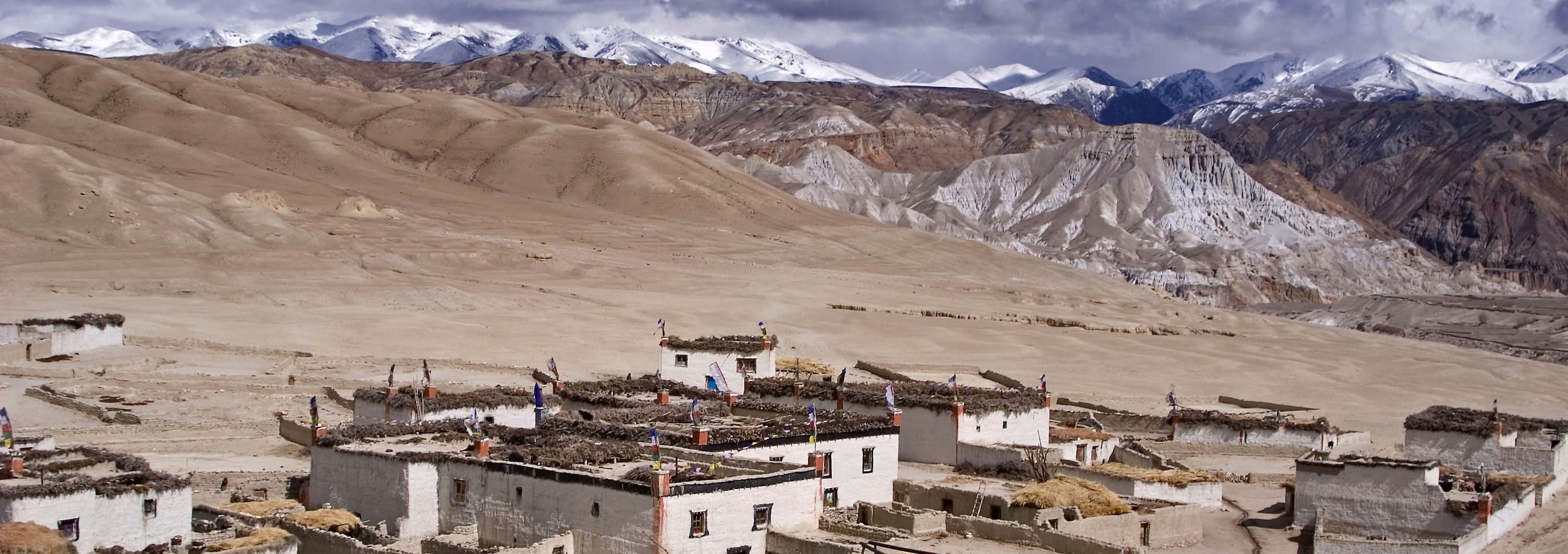
Mustang
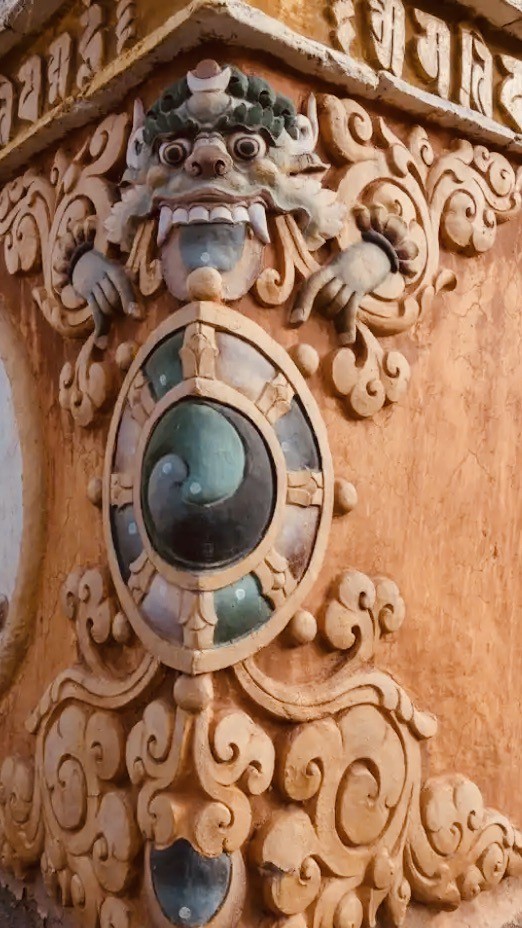
ONE OF THE WORLD'S MOST SPECTACULAR AND EXCITING ROAD TRIP ADVENTURES
The "Kingdom of Lo", nowadays more often referred to as Upper Mustang was famously off limits to all foreigners until 1992.
A "special permit" is still required to enter the very special, former "Forbidden Kingdom of Mustang”.
This remote and isolated land 'behind the Himalaya' is culturally and geographically a part of Tibet. The weathered landscape is almost 'Martian'. The monsoon rains don't reach Mustang, thus it remains arid and barren and always at relentless high altitude with weird wind eroded rock formations and precipitous cliffs. There is much beauty too, particularly the pigmented colourations of the landscape-ochre, brown, grey, red, yellow and dotted with tiny, traditional Tibetan style villages. There are even Deluxe Boutique Heritage Hotels along with welcoming family guest houses, so there’s no “roughing it” in tea houses or the need for a sleeping bag.
Below are just a few of the highlights that can be experienced on a journey into Mustang.
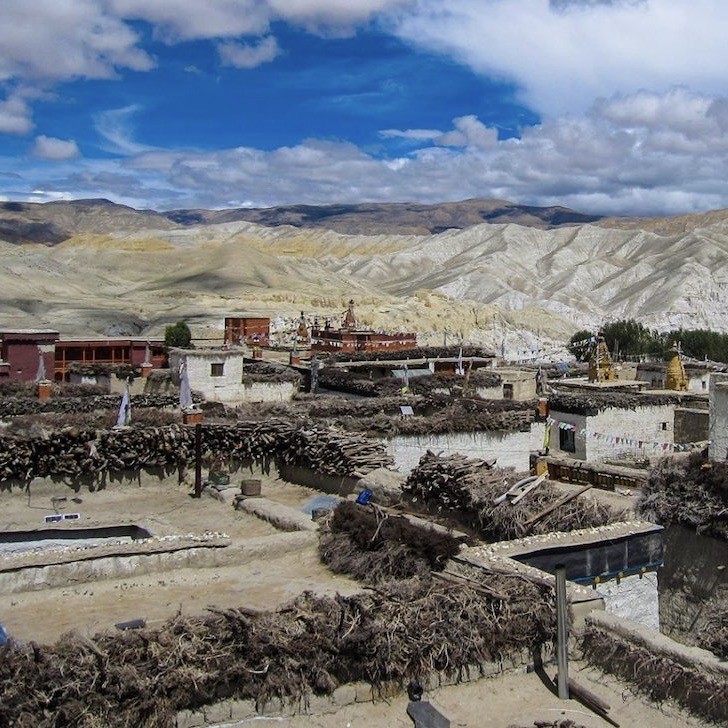
Lo Manthang
The fabled "walled city" of Lo Manthang (3810m) and ancient capital of Mustang was long the domain for the hardy trekker only. Nowadays it can be reached by jeep! It is somewhat small for a city. It is a large village really of less than 200 homes and around 875 people.
Founded in 1380 Lo Manthang was home to the Kings of Mustang and the former Royal Palace remains.
There are four major temples: Jampa Lhakhang or Jampa Gompa, the oldest, built in the early 15th century and also known as the "God house"; Thubchen Gompa, a huge, red assembly hall and Gompa built in the late 15th century and located just southwest of Jampa Gompa; Chodey Gompa and the Choprang Gompa.
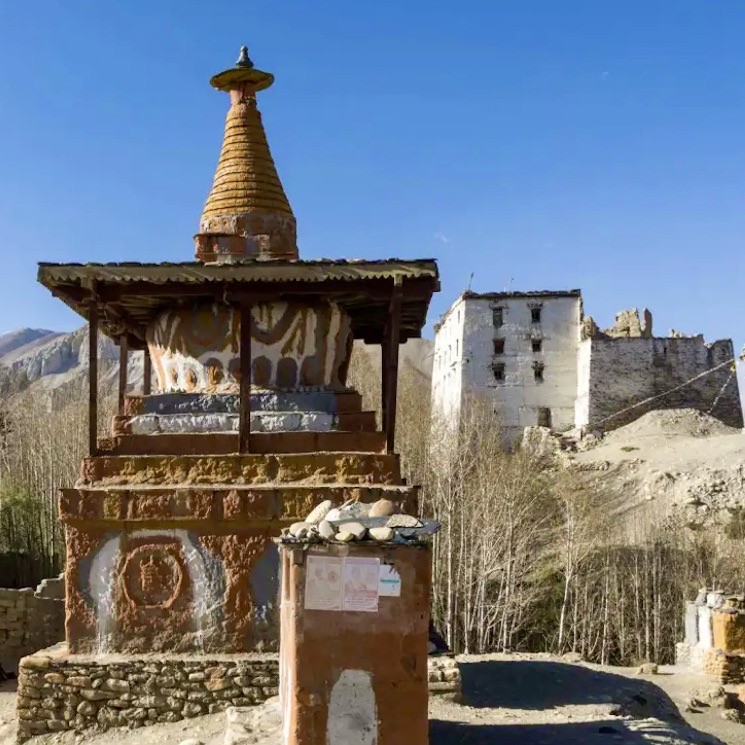
Charang
Brightly coloured prayer flags waft on the cool breeze. Tibetan Buddhist Chortens and Mani (Prayer) Walls surround the village of typically “Mustang style” homes, which form a maze of narrow stone flagged alleyways and whitewashed mud and stone houses with flat timber-topped roofs that blend so perfectly with the surrounding landscape.
Charang (3560m) is the second largest village in Mustang, but with only around 130 homes that’s hardly large. There’s an ancient monastery and a former palace of the Raja of Mustang, numerous chortens, stupas, and other ancient Tibetan Buddhist relics to discover too.
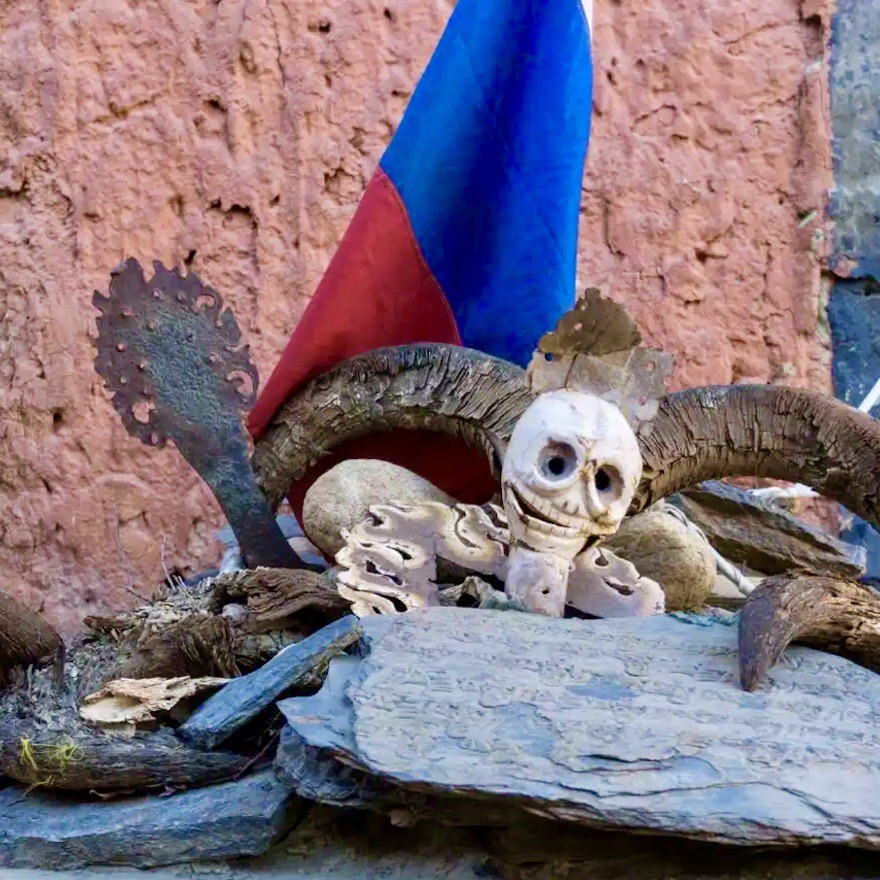
Chhukksang
The village of Chhukksang (3020m) is one of the first traditional typically Mustang style villages encountered on the journey to Lo Manthang once beyond Kagbeni, the gateway to Upper Mustang.
The location is definitely spectacular as Chhukksang is surrounded by huge, vertical cliffs coloured red, orange, grey and almost silver. Amongst some of these dramatic cliffs are mysterious, seemingly inaccessible sky caves.
The village lies where the Narsing Khola River Valley meets the main Kali Gandaki and just a short drive up the Narsing Khola leads to the by and large undisturbed settlement of Tetang, where there's a small Himalayan salt mine close by.
On the opposite side of the Kali Gandaki the rarely visited Gumbakang Gompa can be reached on foot as a short 4 hour return walk. There’s also a stiff hike up to the dramatic Siyarko Danda ridge line where at around 4000m there are outlandish panoramic views of the Nilgiri and Annapurna ranges, as well as into Upper Mustang to behold.
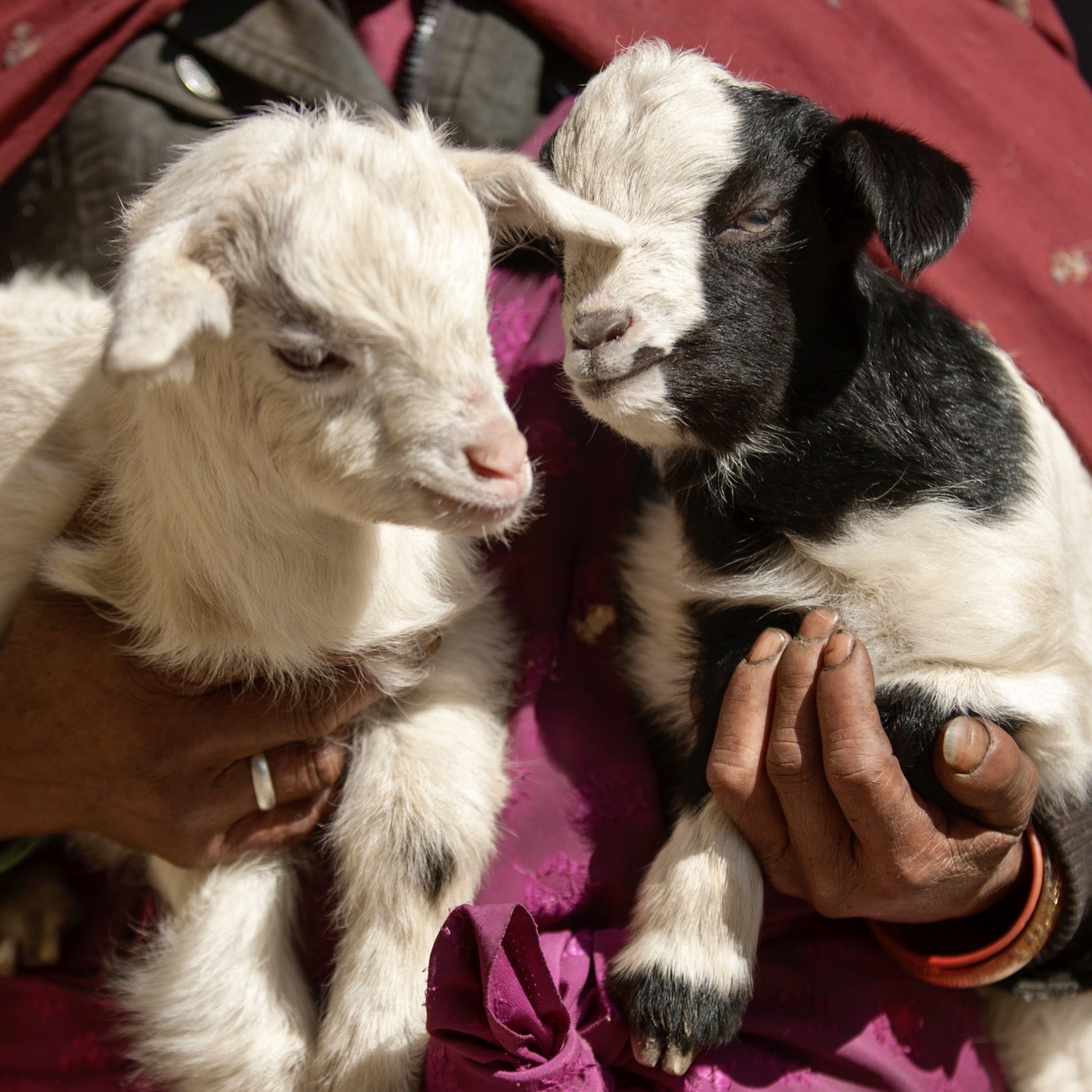
Ghyakar
Tiny Ghyakar (3560m) is where you might discover the "Mustang that was".
As the road to Lo Manthang doesn't pass through Ghyakar, few visitors come here and so Ghyakar largely remains unchanged by time and progress. Although it's a relatively short detour from the road, in some ways visiting Ghyakar is akin to travelling back in time.
This very small settlement of farmers and sheep herders has a distinctly medieval, off the beaten track feel to it.
Indeed polyandry was a practice until recent times here. Maybe it still is? Fascinating to explore, there are also great views of the Annapurna range and Tilicho Peak too. Keep an eye out for the wild blue sheep that frequent the area. The blue sheep being a favourite prey of the very rare and seldom seen snow leopard.
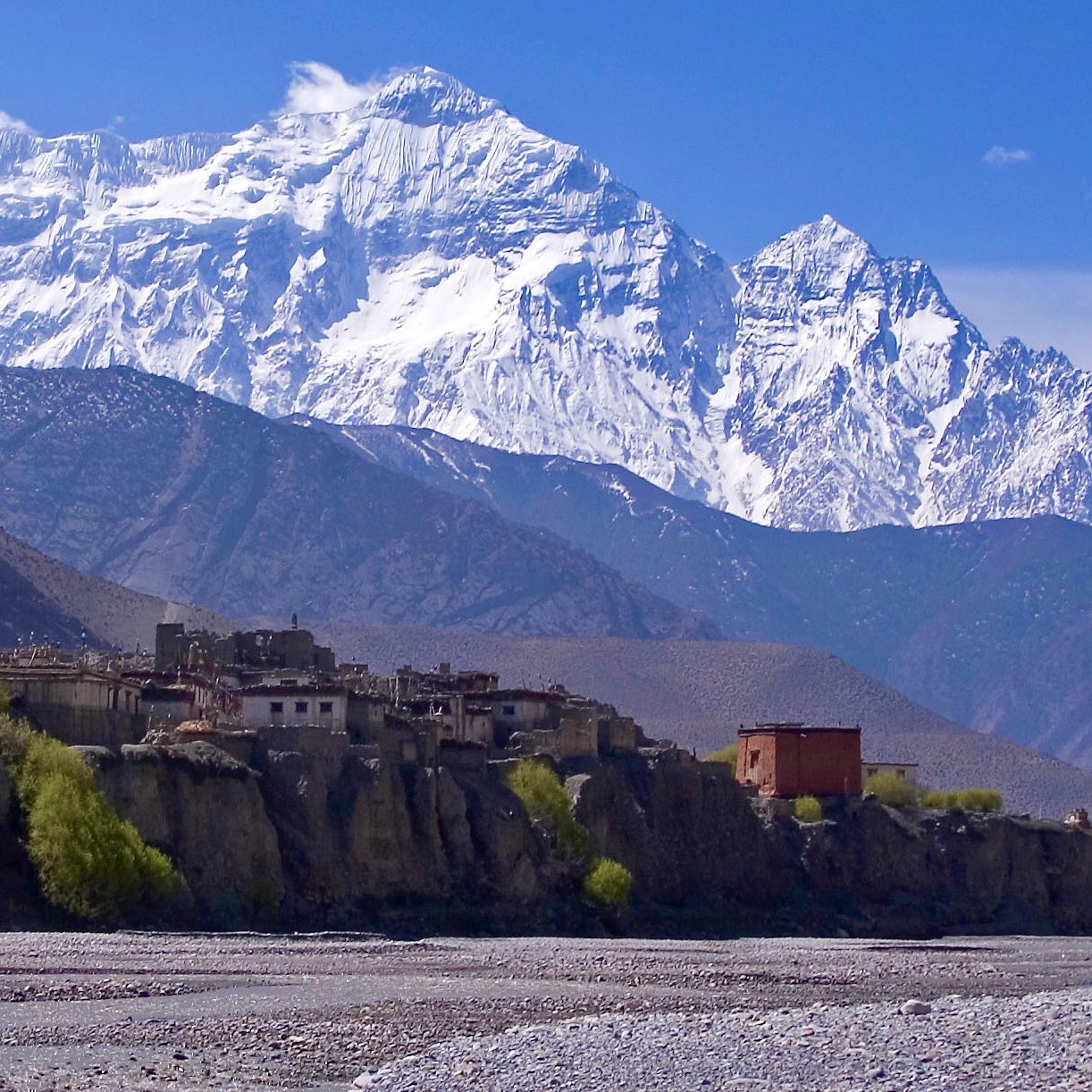
Kagbeni
For centuries, the Tibetan-influenced village of Kagbeni in Mustang has been a 'passing through' place. Lying on the once major trading route between Tibet and India caravans have been stopping off at Kagbeni after crossing the arid Tibetan plateau or before descending the Kali Gandaki Valley. It is also the “gateway” to Upper Mustang as here is far as you can venture without a “Mustang Permit”.
Trekkers on the Annapurna Circuit often take a welcome break at Kagbeni too.
There are spectacular views of the Nilgiri peaks, as well as the wondrous sight of huge Himalayan vultures and lammergeirs soaring on the early morning thermals.
Take a stroll onto the stony Kali Gandaki River bed and you might just find fossils of long since extinct sea creatures as you're standing on what was once the bottom of the Tethys Ocean, even if it is now at 2900m!
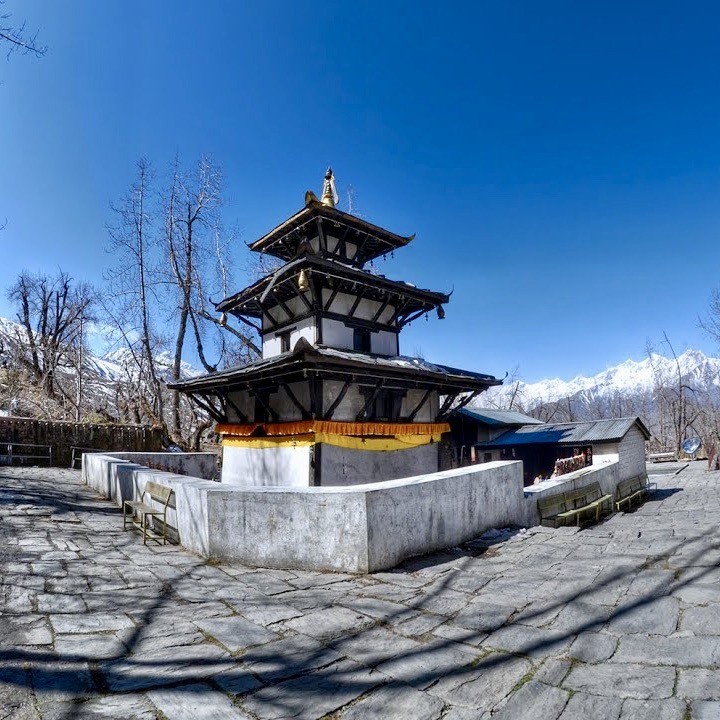
Muktinath
Muktinath lies at an altitude of 3800m in the high ramparts of the Himalaya and is an important place of pilgrimage to both Hindus and Buddhists alike
Many come to Muktinath to offer prayers and perform rituals and the Vishnu temple of Shree Muktinath is considered one of the most sacred shrines, as well as being one of the world's highest too. There are also 108 water springs here, which carry great religious significance.
Muktinath is also the first place of refuge for hardy trekkers whom have just crossed the arduous Thorung La (5416m) on the Annapurna Circuit trek.
Not surprisingly the mountain views up here at Muktinath are pretty spectacular. The near by Thakali village of Lupra features a rare Bon Po Gompa.
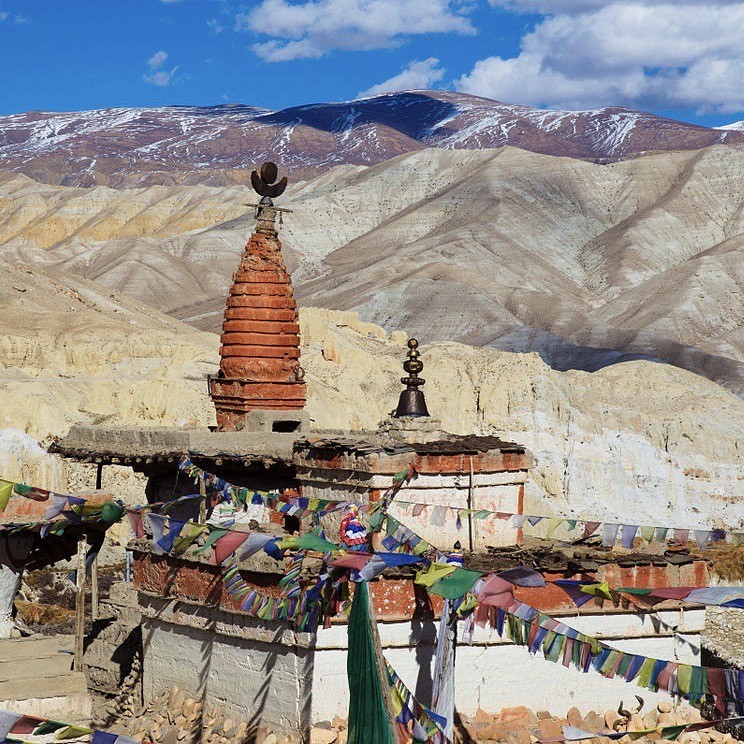
Gompas
There are many ancient Gompas (Tibetan Buddhist monasteries) in Mustang and whilst you’ll find some in villages like Lo Manthang, Charang and Kagbeni, there are also remote and isolated Gompas that can also be discovered in lesser visited side valleys too.
Some Gompas are so remote they take many days of tough trekking to reach!
Highly recommended are Ghar Gompa above Lo Gekar to the west and Luri Gompa, which lies to the east beyond the village of Yara. Both are at an altitude of almost 4000m. Thankfully these two still rather remote monasteries can be reached by 4WD vehicle.
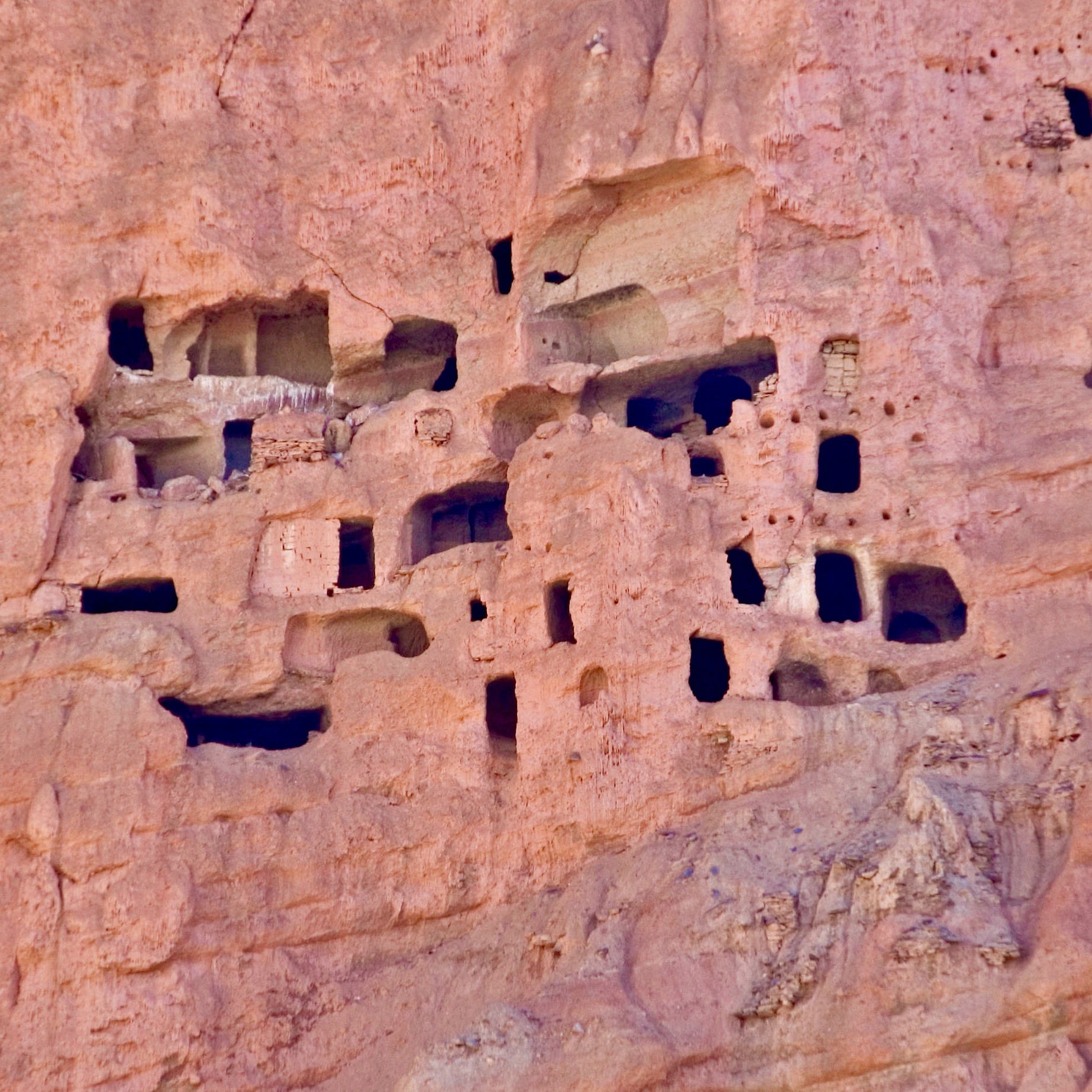
Sky Caves
It’s possible there are more than 10,000 man-made caves dug into the cliffs of Mustang and they are estimated to be 2,000 to 3,000 years old. As well as mummified remains, ancient Buddhist relics have been found in some caves, although it is not yet fully understood who or why these caves were built. The most famous and accessible sky caves are those of Chossar near Lo Manthang.
The man made sky caves at Chossar are also known as the Shija Jhong Cave and are believed to date back to 800 B.C. or perhaps even earlier than that. The cave system is a five-storey structure perched on the edge of a precipice!
There are over 35 “rooms” and multiple ladders lead to higher levels, which makes exploring the caves rather “interesting”.
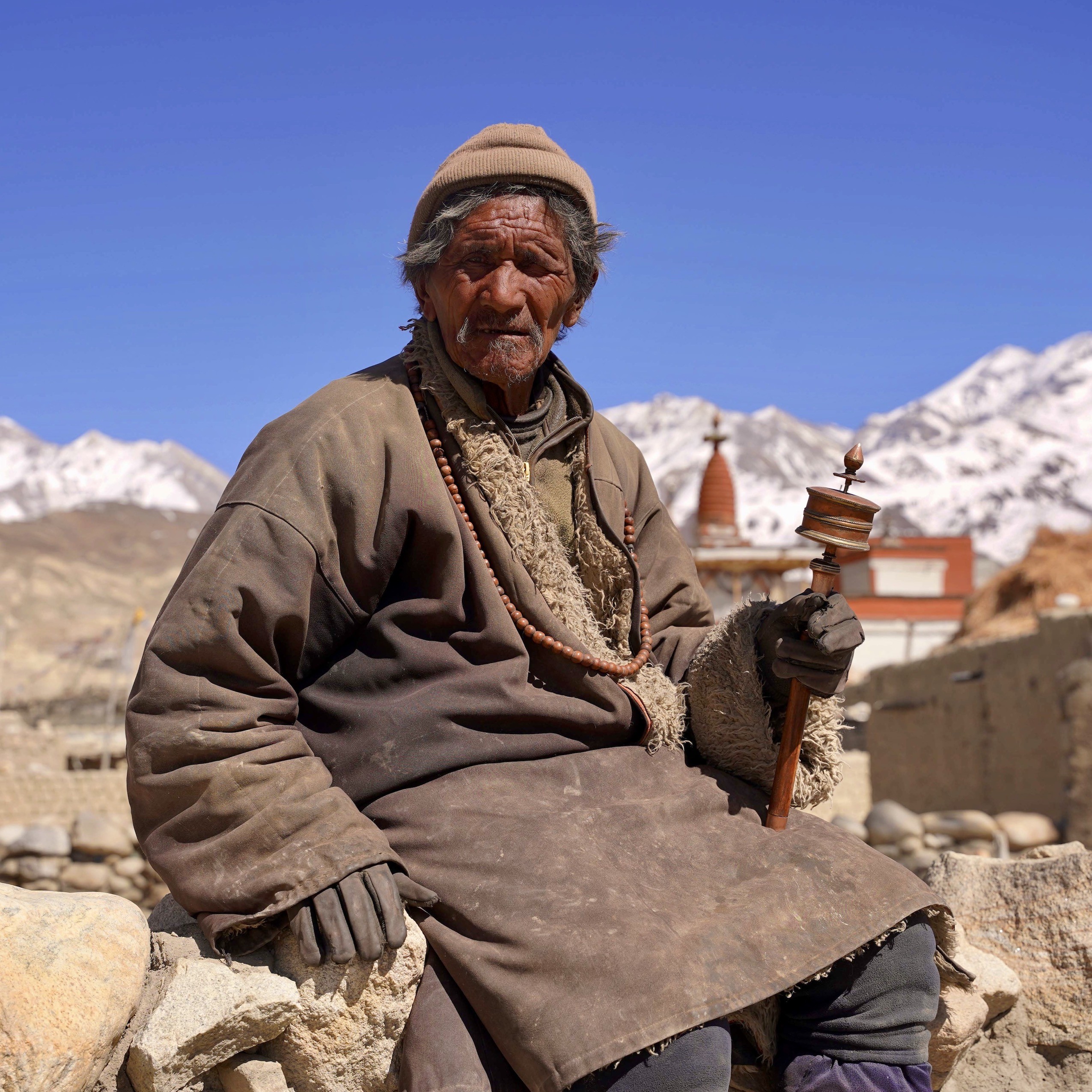
The people of Mustang
Without people Mustang would be entirely a high-altitude desert wilderness. The climate is harsh and arid, so very little can be grown here to sustain life.
Mustang is very sparsely populated and less than 14,000 people call this vast region home. Most villages and settlements are concentrated along the Kali Gandaki Valley, side valleys and the area around Lo Manthang. The rest of Mustang remains mostly inhospitable mountains and desolate.
A nomadic tribe make the perilous journey across the Himalaya, all the way from isolated Dolpo annually to the Lo Manthang Valley and may be encountered between May and September (approximately).
The hardy “Tibetan” people of Mustang manage to live “at the edge” interlinked with their faith and working hard with what little resources there are to survive. Yet in spite of their hardships the people of Mustang provide visitors with a warm and friendly welcome to make a visit to Mustang all the more memorable and culturally enriching.
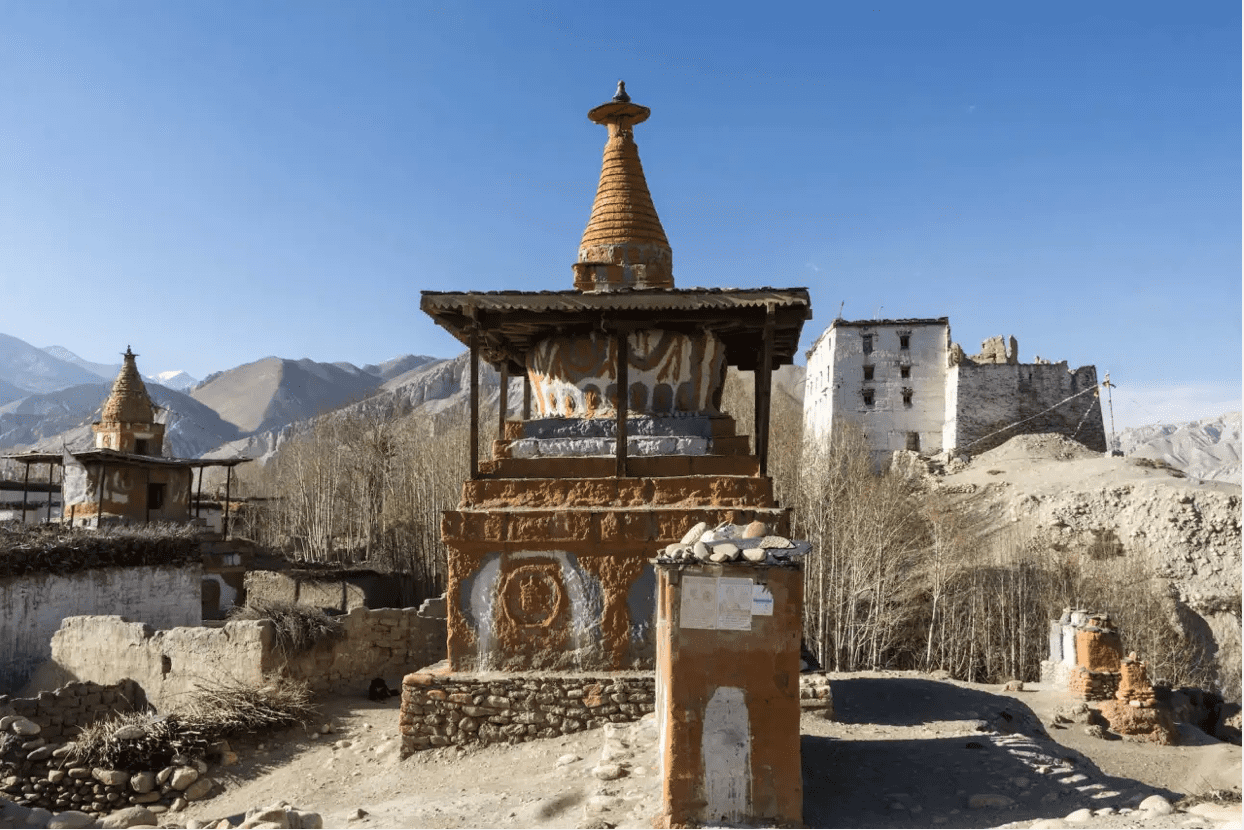
Explore Amazing Mustang with our specially curated image gallery
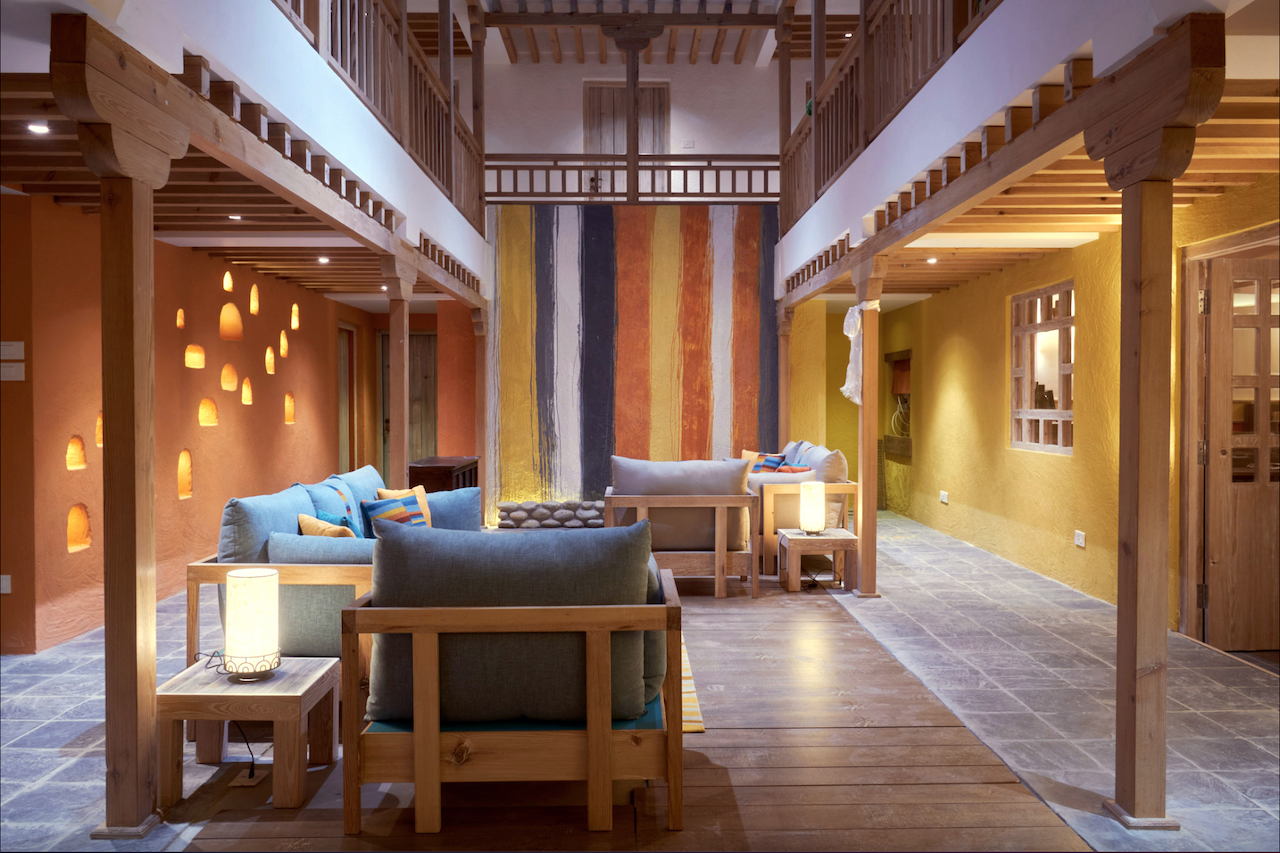
See our hand picked Mustang Accommodation for suggestions as to where to stay.
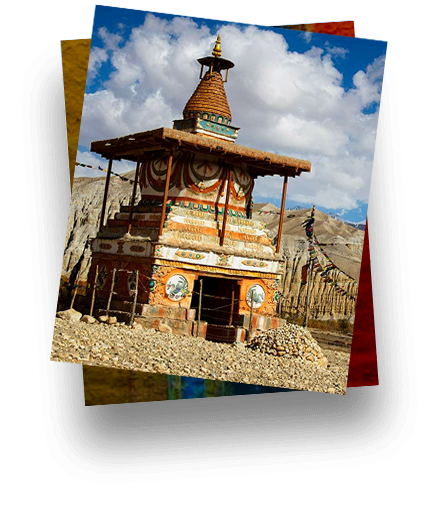
Read our Mustang Travel Guide
Wild landscapes, ancient monasteries, mysterious sky caves, medieval villages and more. Here’s everything you need to know for your journey into amazing Mustang.

Snow Cat Travel is the brand name of and trading as Rural Heritage Journeys PVT LTD of Nepal with a Head Office in Kathmandu. Our parent company
Rural Heritage Nepal owns and operates select boutique, heritage hotels in Nepal such as the Famous Farm at Nuwakot and the Old Inn at Bandipur.
© 2025 Snow Cat Travel.
All rights reserved. Snow Cat Travel is a Registered Trade Mark UK 00003289264
All rights reserved. Snow Cat Travel is a Registered Trade Mark UK 00003289264
